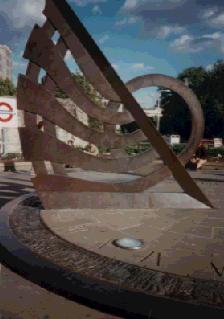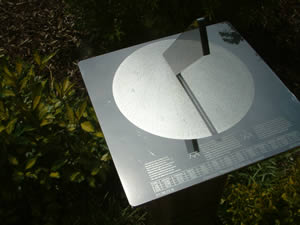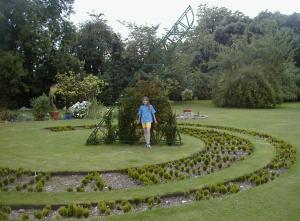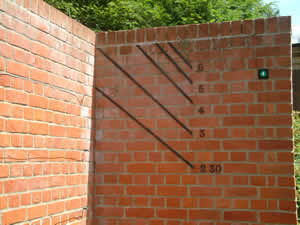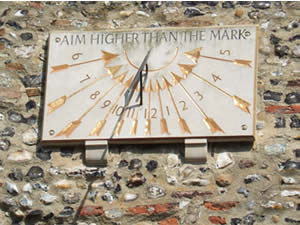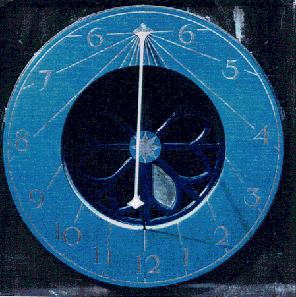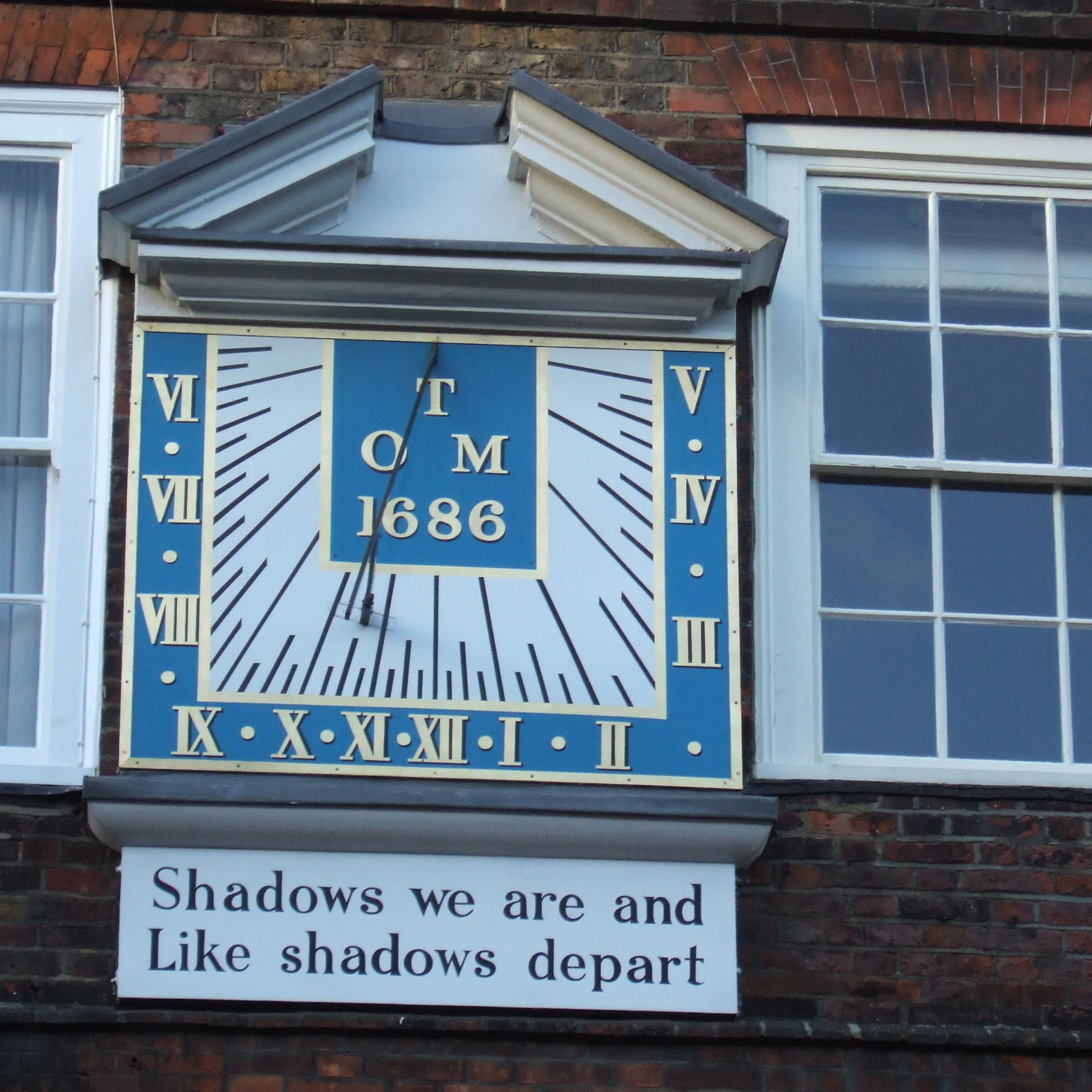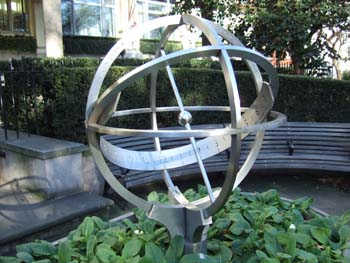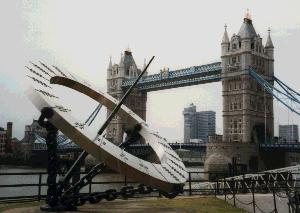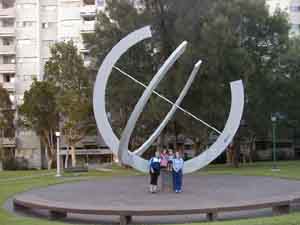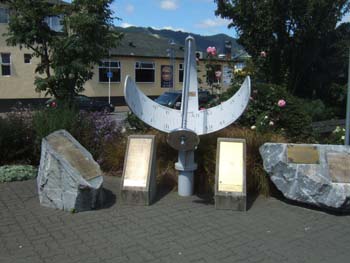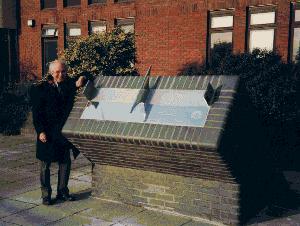|
. This page has now been translated into Danish  please click here
please click here
Sundials are classified into a number of different types, mainly by
the plane in which the dial lies, as follows:
A picture of examples of the first five of these types are shown
on the Connoisseur Sundials page. Other pictures
of sundials are on the Cambridgeshire sundial
trail, the East Sussex sundial page,
and the Toronto sundial page. A picture of
many portable dials is shown on the Sundials in
Poland page. There is also a page of links to
other sundial pictures on the Internet, A diagram of a simple model
equatorial dial, with instructions on how to build it, is shown on the
projects page
- Horizontal
- This is the type found commonly on pedestals in gardens. The dial
plate is horizontal. The gnomon (which casts the shadow) makes an
angle equal to the latitude of the location for which it was designed
(which is not necessarily the location now, see
How to set up a horizontal sundial
Spot-On stainless steel sundial at the Horniman Museum
- Vertical
- This is the type found on the walls of churches and other buildings.
Vertical sundials may be direct south dials if they face
due south (in which case the gnomon will be at an angle equal to the
co-latitude of the place, and the hour lines, if delineated for local
time at the place, will be symmetrical about the vertical noon line).
If they do not face directly south, they are described as declining
dials, and in this case the gnomon will be at a lesser angle
than the co- latitude, and the hour lines will generally be grouped
more tightly in the morning hours, for south-east decliners
and, conversely, grouped in the afternoon hours for south-west
decliners
Though much less common, there are dials with dial plates which are
neither vertical nor horizontal. These are called reclining dials
Pictures: left: the laarge horisontal dial at Tower
Hill Station, London on the Thames sundial trail
- Equatorial dials
- have the dial plate fixed in the plane of the equator. The gnomon
is perpendicular to the dial plate. The hour lines are spaced equally
at 15 degree intervals. The armillary sphere is a development
of this idea, and consists of a series of rings in the planes of the
equator and the meridian, and a rod parallel to the earth's axis and
passing through the center of the rings.
- Polar dials
- have the dial plate fixed parallel with the earths axis. The gnomon
is parallel to the dial plate, typically the edge of a rectangular
plate fixed to the dial plate. The hour lines are parallel to the
gnomon and thus to each other.
- Analemmatic dials
- are not very common. They are unusual because the gnomon is vertical,
and the hours are marked not by lines but by points falling on the
circumference of an ellipse. The gnomon has to be moved depending
on the time of year, so that the shadow falls on the correct point.
Analemmatic dials are particularly suitable for sundials laid out
on lawns, where a person can act as a gnomon; the position where the
person should stand at any given month of the year is marked out along
the north-south axis which crosses the mid-point between the foci
of the ellipse.
- Reflected ceiling
dials
- are even less common. They are a special form of horizontal sundial,
in which a mirror laid on a south-facing windowsill reflects the sun
onto the ceiling. The hour lines are drawn on the ceiling.
- Portable dials
- come in many varieties, such as the shepherd's dial, the tablet
dial, the ring dial and others. They are not strictly a separate type
of dial, but can be of the types listed above.
|

 please click
please click 